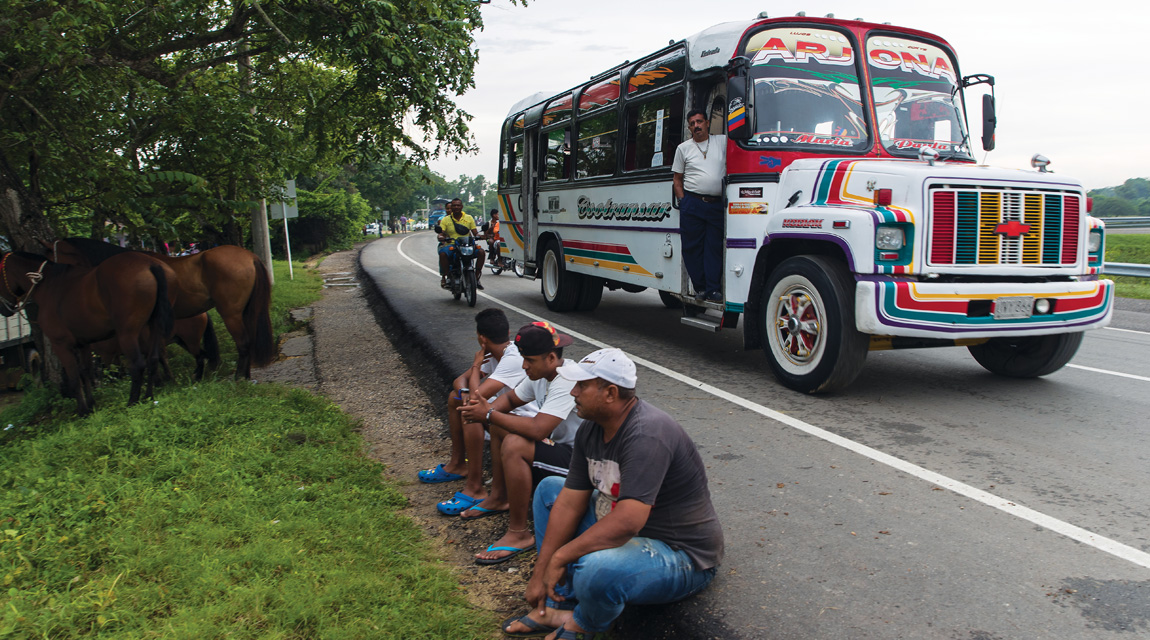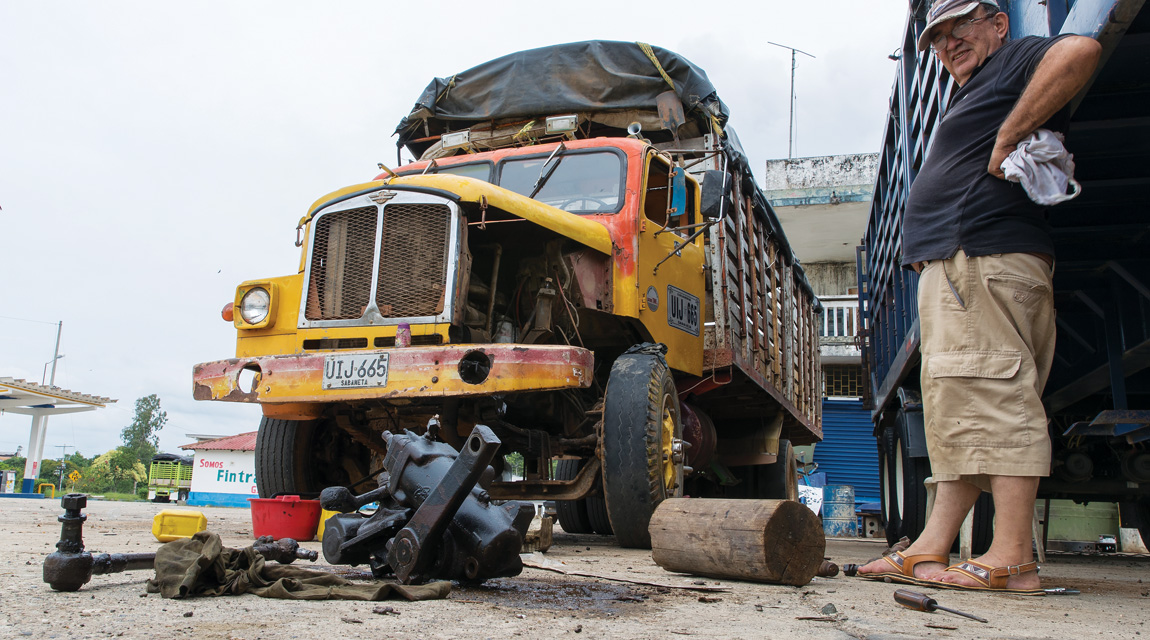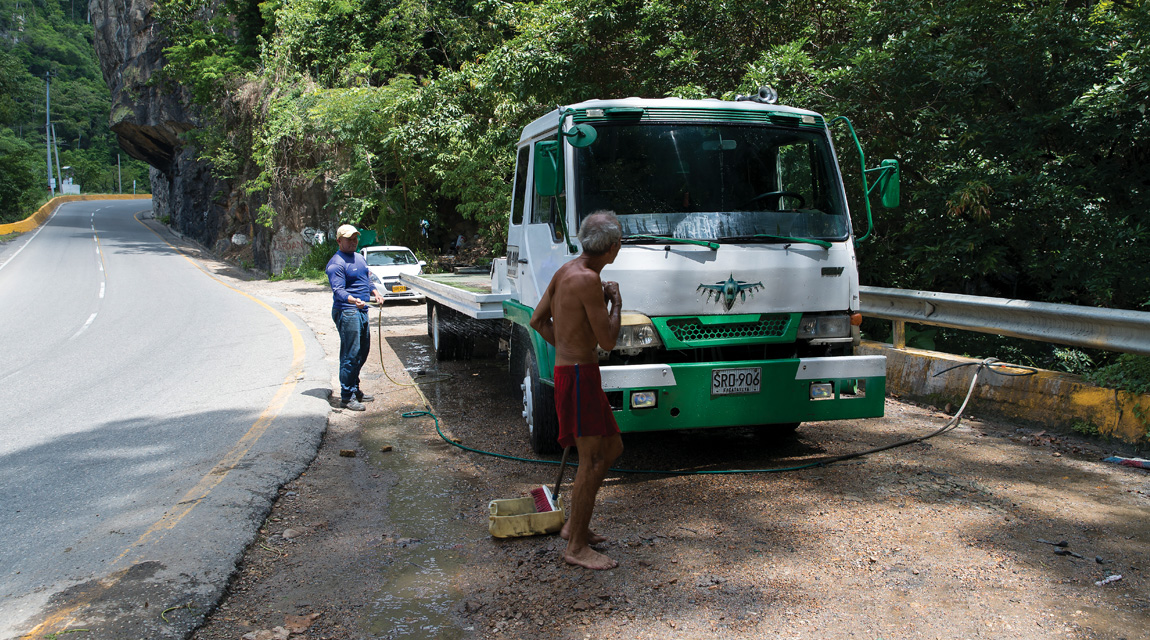Danger, love and the “Food” with no brakes

Truck drivers in Colombia are allowed to choose the number of hours that they work. They sleep in hotels, or hospedajes, and often drive vehicles built decades ago. Having only half a brake pad is no problem in this country, as long as the engine brake still works, writes RICHARD KIENBERGER.
The reports about Colombia in the world’s media over the last couple of years focused mainly on cocaine, drug trafficking, or the civil war – which is regarded as the longest-running on earth.

Towards the end of 2016, the Latin American republic created some positive news. The civil war seemed to lose its impetus after the peace contract was signed between the government and the largest rebel group, FARC. For achieving this, Colombian President, Juan Manuel Santos, was awarded the prestigious Nobel Peace Prize.
Most Colombians are fully aware that the civil war has tied up too much of the country’s economic resources, and that there is a need for strenuous efforts to transform this shadow economy into one that is sustainable with non-criminal structures, and to overcome the enormous social gap experienced by so many citizens.

It’s probably not correct to comment on people without really knowing them, but the half-naked man washing cars or trucks beside Autopista 25 does not give the impression of happiness. His job earns him only couple of pesos.
He lives just beside the road in a kind of cavern. His wife lounges drowsily in a hammock, waiting for another day to pass by. She doesn’t even take notice of the clients her husband serves; who rank much further up in the social hierarchy.
Taking a job as a truck driver means hard work, but it is a good basis for a decent living. In Colombia it’s possible to make good money, even with an old truck. “A couple of years ago business was bad, but it has become splendid again,” says the owner of a black bonneted Mack built in 1978. He adds that, despite its age, his truck is in good shape.

Juan, another driver, confirms this: “At least the truck is paid for,” the former bus driver laughs. The vehicle is used as a mobile shop nowadays and requires water at each stop on the strenuous tour through the mountains.
It carries a heavy load of sacked corn that Juan has packed in together with his buddy Darwin. Juan claims that the truck was built in the early 1950s and that the engine was refurbished 20 years ago. Also, the bonnet of the truck seems to have been taken from a younger model…
Considering the age of the trucks and the challenging topography, talking about service intervals becomes another spin in Colombia. Not many of them see a whole week pass without any technical problems.

It’s a Sunday afternoon when José Florez and his son prepare the old CAT engine in his Kenworth truck – made in 1984 – for the week ahead. José-Jeffrey is ten years old and he loves the job of his papá. Whenever possible they team up for a tour.
The Kenny, owned by a patron, is combined with a special tipper trailer in a configuration seen quite often in Colombia. The tipper is separated into two parts, with the front tipping sideways and the rear part tipping backwards. Florez’s average daily mileage is around 350 km. He earns a salary plus a bonus for each trip he makes.
It’s not unusual for truck drivers in Columbia to be accompanied by their wives or children. We come across another father-son team on the road in an old, stocky tipper. This Fiat 673 N was built in 1980. The truck seems to be in good shape; this series was probably well built as there are many of them still on the road.
The Dodge owned by Kewin is entirely different. He takes his pregnant wife along on the road on a 350-km ride over hills in a draughty truck… There is no guarantee that the Dodge (which is loaded with heavy metal parts) will make it back home to the outskirts of Bogotá.

Most of the truck drivers know exactly how to make it through the narrow and hilly roads. They drive with precision and have to keep calm, even when on some stretches the maximum speed does not exceed 30 km/h for hours on end.
Cesar Correa has worked as a truck driver for more than 27 years and gets his truck washed a few miles out of Bogotá. He is married and a father of two children. The truck he’s driving for a company in Bogotá is a white International tractor. He drives an average of 2 000 km per week, which is more or less the same as most drivers. There is no legal limit on driving time…
“We drive until the job is done, or until we are too tired to continue,” says Correa. When they have a rest, it’s not in the truck – there are hardly any trucks fitted with sleeper cabs in Colombia. The drivers go to bed in a hotel or hospedaje.
Cesar admits that the job is dangerous in Colombia as there are many accidents. According to statistics, the number of annual traffic deaths in this country reach almost 17 fatalities per 100 000 people – approximately four times higher than in Germany.

The anarchistic driving style and the poor technical condition of many vehicles contribute to the high rate of accidents. Sometimes it seems that the drivers of city buses and long-distance coaches are the worst of all. It’s easy to find wrecks of buses, cars and trucks that have just turned over.
Then there is this old “Food” (on the bonnet the “R” was replaced by an “O”) which is jacked and parked beside one of the many toll stations. As the left front wheel is dismantled, it’s possible to have a look at the brake pads; which are in a desperate, worn-out condition.
“The bearings are broken,” says the man next to the truck, who claims to be the mechanic waiting for the driver, who is trying to find the spare parts needed. “The brake pads are OK and will last for many more kilometres,” he says.
When sitting in an aeroplane, many people in Latin America cross themselves just before the take off. It would probably be wise to copy this ritual before starting to drive on Colombia’s roads.
Published by
Focus on Transport
focusmagsa




